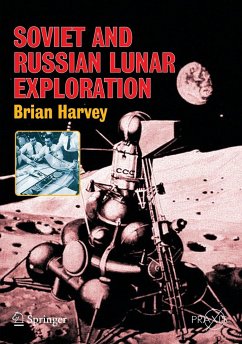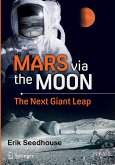When, in July 1969, the Americans decisively beat the Soviet Union in the race to put an astronaut on the moon, this event had profound historical, scientific and political implications. This book tells the story of the Soviet and Russian lunar programme, from its origins to the reconsideration of a lunar programme in the present-day federal Russian space programme. Following Sputnik, the first Soviet lunar flights achieved the key goals of hitting, circling and photographing the moon in 1959. The Soviet Union planned to achieve the biggest prize of them all -the first person to land on the moon - and built all the key spaceships required to do so, such as a lunar orbiter and lander. Brian Harvey describes the techniques devised by the USSR for lunar landing, from the LK lunar module to the LOK lunar orbiter and tested versions in Earth orbit. He asks whether these systems would have worked and, examining how well they were tested, concludes that they would have: the Soviet Union lost the moon race for political, not technical reasons. Designs for moon bases were even drawn up. In the end, the Soviet Union ran an impressive series of robotic missions from 1968 to 1976 to circle the moon, map the far side, conduct scientific observations from orbit, recover samples and rove over the surface. The scientific haul from these missions is surveyed: what was actually learned about the moon, its rocks and the lunar environment, that will be useful for the present plans by the United States to return to the moon and for other countries, such as India and China, to conduct their own lunar exploration.
The book opens in Surgut, Siberia, in August 1976, with a largely forgotten event: the return to Earth after a three-day journey from the moon, under a single parachute, of the tiny Luna 24 cabin, with a core sample drilled deep into the Sea of Crises, a remarkable scientific and engineering achievement. It ends with an examination of projected missions, fromplans to explore the far side and set up lunar observatories to the Luna Glob explorer of the 1990s. There is also discussion of lunar tourism, using a modernized version of the Zond spacecraft which flew around the moon from1968 to 1970.
The book opens in Surgut, Siberia, in August 1976, with a largely forgotten event: the return to Earth after a three-day journey from the moon, under a single parachute, of the tiny Luna 24 cabin, with a core sample drilled deep into the Sea of Crises, a remarkable scientific and engineering achievement. It ends with an examination of projected missions, fromplans to explore the far side and set up lunar observatories to the Luna Glob explorer of the 1990s. There is also discussion of lunar tourism, using a modernized version of the Zond spacecraft which flew around the moon from1968 to 1970.
From the reviews:
"Brian Harvey, who has written a number of books on aspects of Soviet/Russian space programmes, has produced an excellent work in this latest volume. ... A good feature of this book are the little summaries at the end of each chapter or major section, as well as the various statistical tables. There are also lots of illustrations. ... Anyone with an interest in the history of Soviet/Russian space activities would find ... illuminating and rewarding." (Liftoff, Issue 239, 2007)
"Harvey concisely covers the Soviet space program from the mid-1950s through the mid-1970s. ... The book is very readable and a good general survey of the history of the Soviet lunar program ... . This would be a good first book for learning about the Soviet lunar program. It has a fairly extensive bibliography for those who wish to delve deeper into this area. Summing Up: Recommended. General readers; lower-division undergraduates." (D. B. Mason, CHOICE, Vol. 45 (2), 2007)
"Brian Harvey, who has written a number of books on aspects of Soviet/Russian space programmes, has produced an excellent work in this latest volume. ... A good feature of this book are the little summaries at the end of each chapter or major section, as well as the various statistical tables. There are also lots of illustrations. ... Anyone with an interest in the history of Soviet/Russian space activities would find ... illuminating and rewarding." (Liftoff, Issue 239, 2007)
"Harvey concisely covers the Soviet space program from the mid-1950s through the mid-1970s. ... The book is very readable and a good general survey of the history of the Soviet lunar program ... . This would be a good first book for learning about the Soviet lunar program. It has a fairly extensive bibliography for those who wish to delve deeper into this area. Summing Up: Recommended. General readers; lower-division undergraduates." (D. B. Mason, CHOICE, Vol. 45 (2), 2007)








